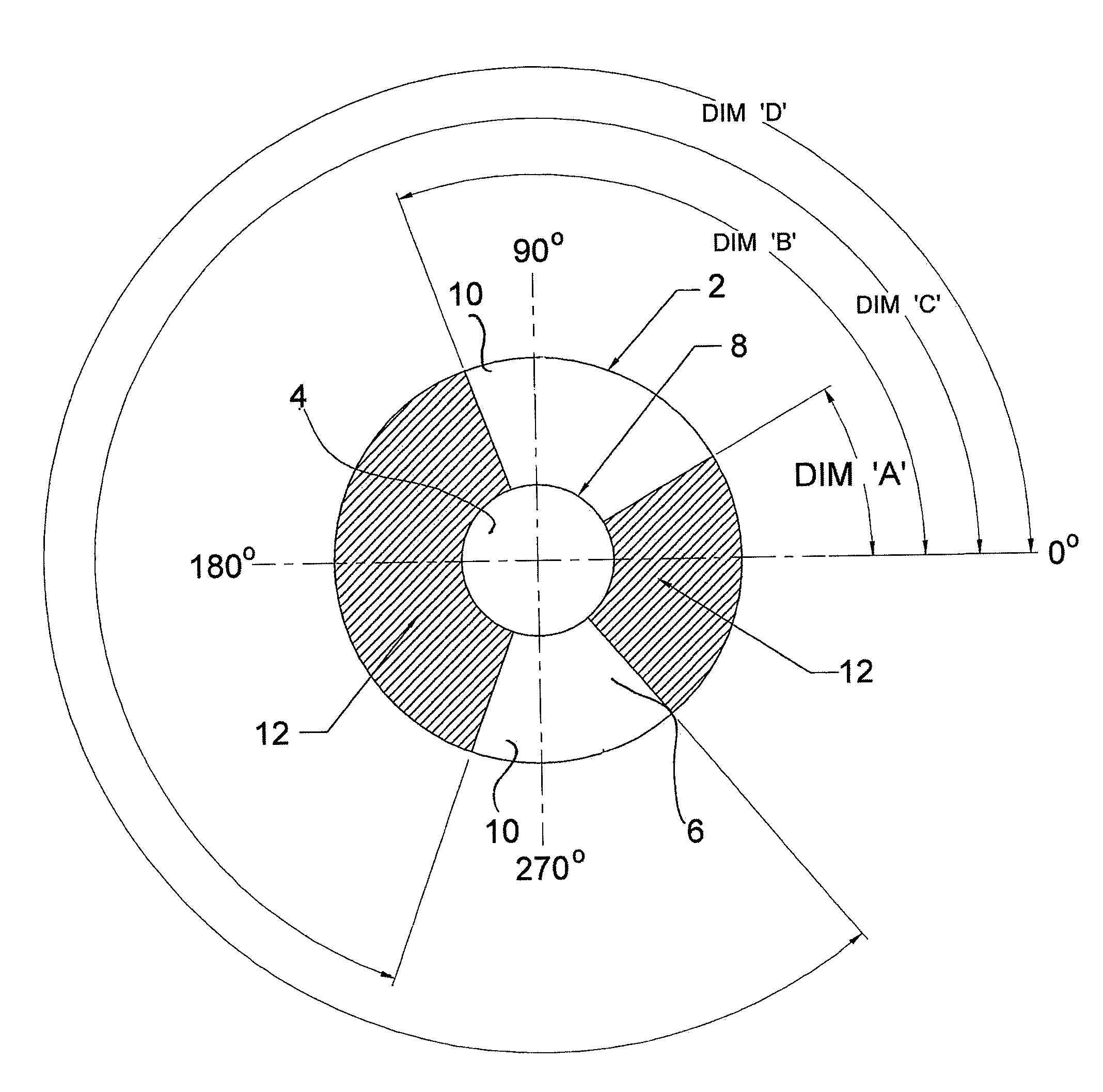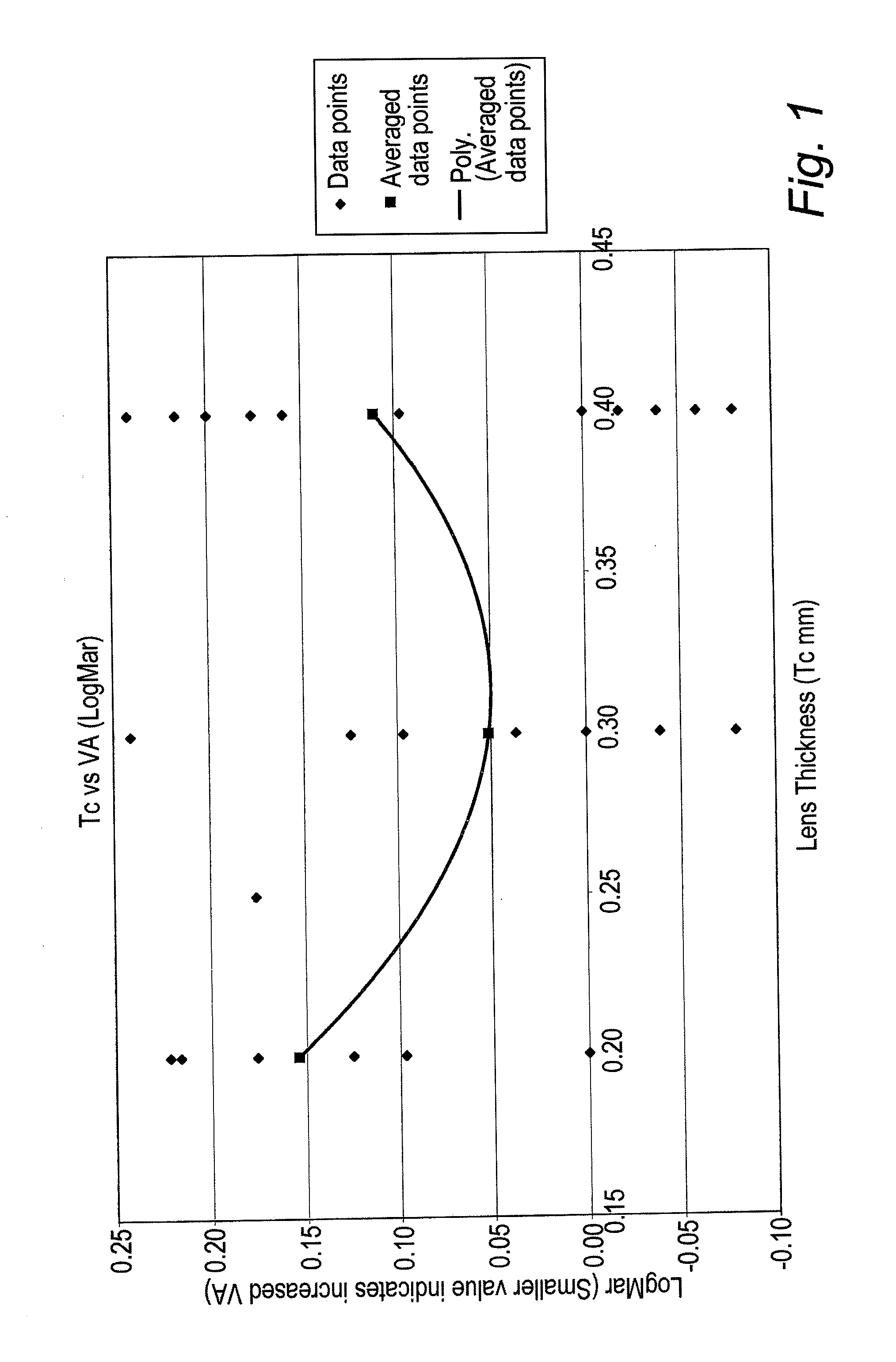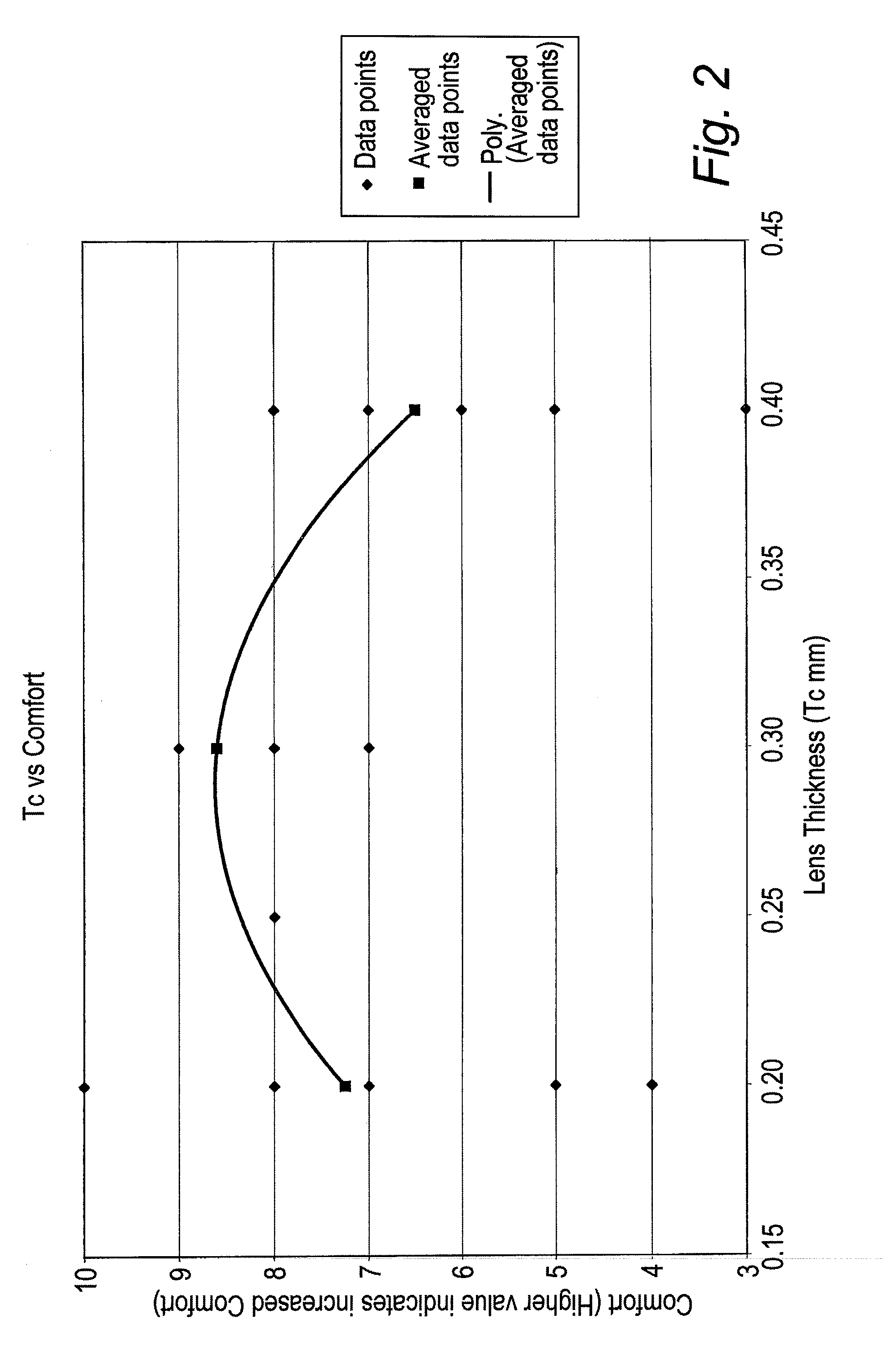Contact Lens and Method of Manufacture
a technology of contact lenses and lenses, which is applied in the field of contact lenses and methods of manufacture, can solve the problems that the front surface of the contact lens cannot be affected, the distortion of the optics cannot be satisfactorily corrected by spectacles, and the deformation of the optics cannot be transferred to the front surface of the contact lens, so as to achieve the effect of keeping the optical zone of the contact lens relatively thin
- Summary
- Abstract
- Description
- Claims
- Application Information
AI Technical Summary
Benefits of technology
Problems solved by technology
Method used
Image
Examples
example 2
[0080]This example describes a preferred feature of the invention, (“sector management control”), in which the sagittal depth of the peripheral zone of the lens is adjusted to improve the fit of the peripheral zone of lens to a subject's cornea.
[0081]Referring to FIG. 5, a lens (2) comprises a central, circular optic zone (4) and a peripheral zone (6) disposed around the optic zone, the junction between the central zone (4) and the peripheral zone (6) denoted by reference numeral (8). The angular position of positions around the lens is conventionally defined by reference to a horizontal line passing through the centre of the lens, with O° at the right hand end of the horizontal line.
[0082]The peripheral zone of the lens is divided into two sectors (10) of default sagittal depth, and two sectors (12), shown shaded, with have a sagittal depth which may be greater or less than the default depth. An optometrist or other individual provided with information regarding the shape of the su...
example 3
[0085]This example illustrates an advantage of the invention. FIG. 8 is a transverse medial section through a conventional afocal trial lens used for test fitting purposes. In the optic zone (26), the front and near surfaces of the lens are of equal radius of curvature, so there is not net refraction.
[0086]FIG. 9 is a transverse medial section through a conventional prior art lens of high optical power. As a result of the larger radius of curvature applied to the front surface of the optic zone (26), the sagittal depth of the peripheral zone of the lens (28) is significantly thicker than that of the peripheral zone (28) of the test lens (depicted in FIG. 8). As a result, the corrective lens may not fit the subject as well as would be expected from the analysis performed using the trial lens. (“Fit”, in this context, also encompassing the interaction between the lens and the subject's eyelids).
[0087]FIG. 10 shows a transverse medial section through a corrective lens designed in accor...
example 4
[0088]History
[0089]KB is a 28 year old male. He had been considered amblyopic in the right eye for many years until he was diagnosed with keratoconus in 2009, when he sought help as his left eye began to deteriorate. Six months prior to his appointment he had attempted to wear RGP lenses, but discontinued due to intolerance and had managed with spectacles since that time. The keratoconus in his left eye had been actively progressing for six months and he was therefore considering CXL treatment for this eye.
[0090]Initial Findings
[0091]Spectacle Refraction
[0092]RE: −4.00 / −4.25×55 VA 6 / 60 LE: −5.50−5.00×101 6 / 18
[0093]As KB suffers from ghosting and multiple images with spectacle wear, he has difficulties viewing computer screens.
[0094]Previous Contact Lens Prescription:
[0095]RE: 6.77×31 / 5.78×121
[0096]LE: 7.18×153 / 7.02×7.02×63
[0097]Slit Lamp
[0098]Cornea clear both eyes. No staining with fluorescein.
[0099]Rationale for Fitting Contact Lens of the Invention
[0100]Patient preference was for...
PUM
 Login to View More
Login to View More Abstract
Description
Claims
Application Information
 Login to View More
Login to View More - R&D
- Intellectual Property
- Life Sciences
- Materials
- Tech Scout
- Unparalleled Data Quality
- Higher Quality Content
- 60% Fewer Hallucinations
Browse by: Latest US Patents, China's latest patents, Technical Efficacy Thesaurus, Application Domain, Technology Topic, Popular Technical Reports.
© 2025 PatSnap. All rights reserved.Legal|Privacy policy|Modern Slavery Act Transparency Statement|Sitemap|About US| Contact US: help@patsnap.com



